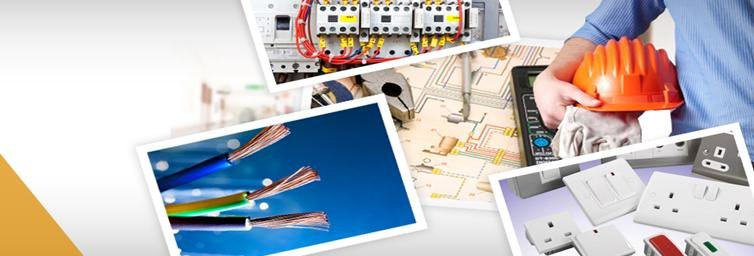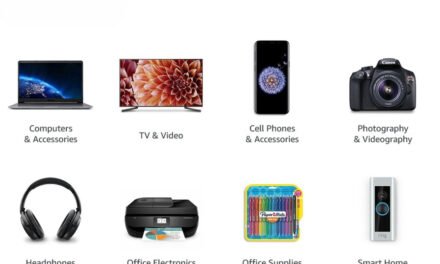Electrical supplies are essential components used in households and businesses to ensure the safe and efficient distribution, control, and utilization of electricity. The types of supplies vary depending on the setting (residential vs. commercial) and the specific electrical needs. Below is an overview of commonly used electrical supplies in both households and businesses:
1. Power Distribution Supplies
These supplies are fundamental for distributing electricity from the main power source to various devices and systems.
- Circuit Breakers: Protect electrical circuits from overloading or short-circuiting.
- Fuses: Provide overcurrent protection by breaking the circuit when current exceeds a safe limit.
- Distribution Boards (DB): Also known as breaker panels, they house circuit breakers and fuses for managing power distribution.
- Electrical Meters: Measure electricity consumption, often used in both households and businesses.
2. Wiring and Cabling
These are essential for carrying electrical current throughout buildings.
- Electrical Wires: Insulated copper or aluminum wires for residential and business use.
- Cables: Heavy-duty cables for high-capacity power transmission.
- Extension Cords: Portable power delivery solutions for temporary or flexible use.
- Conduits and Trunking: Protective enclosures for wires and cables, ensuring safety and organization.
3. Lighting Supplies
Lighting supplies vary based on the setting, with businesses often requiring more robust or specialized solutions.
- Light Bulbs:
- Incandescent bulbs (less common now).
- LED bulbs (energy-efficient and long-lasting).
- Fluorescent tubes (often used in businesses).
- Fixtures: Ceiling lights, wall sconces, chandeliers, and track lighting for homes and businesses.
- Smart Lighting: App-controlled or automated lighting systems, increasingly popular in modern homes and offices.
- Emergency Lighting: Backup lighting systems used in businesses for safety during power outages.
4. Electrical Outlets and Switches
Used to control and access power.
- Standard Wall Outlets: Two- or three-prong sockets for connecting devices.
- USB Outlets: Integrated USB ports for charging electronic devices.
- Smart Outlets: Internet-connected outlets for remote control and automation.
- Switches: Toggle, dimmer, and smart switches for controlling lights and appliances.
5. Safety and Protection Devices
Essential for preventing electrical hazards.
- Ground Fault Circuit Interrupters (GFCIs): Protect against electric shocks in wet areas like bathrooms and kitchens.
- Surge Protectors: Prevent damage to appliances and equipment from voltage spikes.
- Smoke Detectors and Fire Alarms: Often connected to the electrical system for early warning.
- Voltage Regulators: Ensure a stable voltage supply, particularly important for businesses.
6. Heating, Ventilation, and Cooling (HVAC) Components
These systems rely on electrical supplies for efficient operation.
- Thermostats: Control temperature settings.
- Fans: Ceiling, exhaust, and industrial fans.
- Air Conditioning Units: Residential and commercial-scale cooling solutions.
- Heating Systems: Electric water heaters, space heaters, and radiators.
7. Appliances and Device Supplies
Powering and connecting household and office equipment.
- Power Strips: Allow multiple devices to connect to a single outlet.
- Adapters and Converters: Enable compatibility with different plug types or voltages.
- Battery Chargers: For portable electronics and emergency backups.
- Uninterruptible Power Supplies (UPS): Provide temporary power during outages, commonly used in businesses.
8. Smart Home and Automation Supplies
These are increasingly common in both homes and modern office settings.
- Smart Plugs and Switches: Enable remote control via apps or voice commands.
- IoT Devices: Thermostats, cameras, and sensors integrated into smart home ecosystems.
- Home Security Systems: Alarm systems, video doorbells, and motion sensors.
9. Industrial and Commercial Electrical Supplies
While less common in households, these are critical for businesses.
- Transformers: Step up or step down voltage as required.
- Power Generators: Backup power for businesses and some homes in remote areas.
- Industrial Controls: Programmable logic controllers (PLCs) and relays for automating processes.
- Heavy-Duty Switches and Disconnects: For large machinery and equipment.
10. Renewable Energy Components
Becoming more common in both households and businesses.
- Solar Panels: Convert sunlight into electricity.
- Inverters: Convert DC power from solar panels to AC power for use in appliances.
- Batteries: Store energy for later use, often paired with solar systems.
The types of electrical supplies used in households and businesses differ in scale, complexity, and purpose. While residential supplies prioritize convenience, safety, and aesthetics, business supplies often focus on efficiency, scalability, and robustness. Both settings, however, rely on an evolving range of components driven by technological advancements and sustainability trends.














